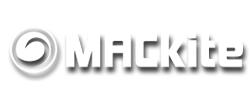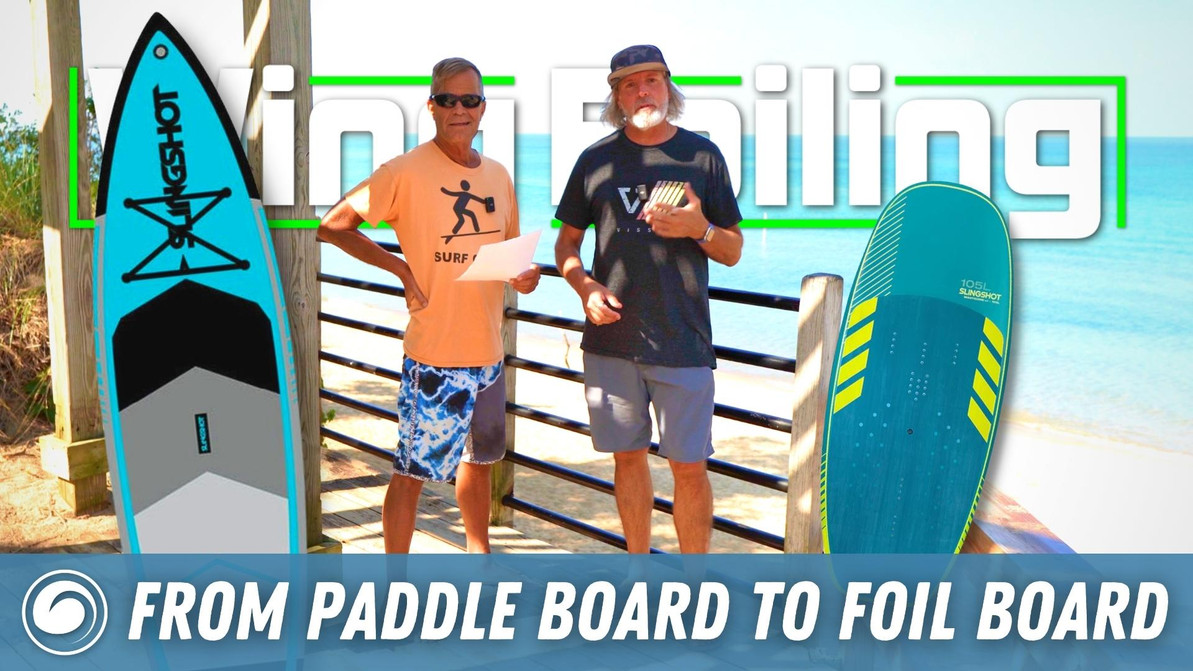How to Progress from Wing Paddle Board to Wing Foiling
Reasonable Expectations
Most new Wingers (including strong athletes) require at least 20 hours before getting extended flights in a straight line with their wing and foil board (transitions will require more time).
- 5+ hours with wing and paddleboard (no foil)
- 5+ hours with e-foil or foil board behind a boat
- 10+ hours putting the skills together
Unreasonable expectations always lead to frustration. All of your surf, kiteboard, and/or windsurf experience will not magically change this.
When You Read the Wind Range for Wing Sizes
This is the range for experienced riders who know how to pump the wing and foil in lighter wind to start flying, and how to spill excess power overhead when overpowered in neutral without crashing.
Why You Need to Know How to Pump the Wing and Foil
As soon as the foil engages and the board lifts off the water, it releases 98% of the drag resulting in instant acceleration. Acceleration creates significantly stronger (apparent) wind hitting your wing - which will cause you to be very overpowered right away. This is why it’s so important to learn how to pump the wing, and the foil, before trying to wing foil.
Using a wing size that requires several pumps in order to start flying means that when the wind increases from the reduction in board drag, you will have the right size wing for the apparent wind speed.
A ”Free Ride” Has a Hidden Price
Sure, you can just use a bigger wing and get a free ride up on foil without pumping, but then you will be flying out of control fast resulting in unpleasant crashes. Take the time to master the fundamental building blocks before trying to fly. In the long run, you will progress much faster if you take the time to master the fundamentals.
Pre-Flight Skills Checklist
Note: These skills must be mastered and instinctive before attempting to fly on foil. If you have to think about any of these then you can’t think about combining them.
- Able to wing with a paddle board on a plane in 15+ mph winds with good posture, goofy and regular.
- Able to make transitions upwind and downwind.
- Able to pump the wing to increase power on a paddle board, goofy and regular.
- Able to “Ollie” the paddle board (without a foil) simulating pumping the foil, goofy and regular.
- Able to ride an E-foil, or Wing Foil board towed by a boat, goofy and regular.
- Practice 1-4 on your Wing Foil board with surf fins in the foil tracks instead of hydrofoil.
If you can’t get a tow from a boat, you’ll need to spend an extra 10 hours riding your wing foil board in 15 + knots of wind with twin fins or the foil mast all the way back in the tracks to reduce the lift, and allow you to keep the board on the surface of the water.
Wing Foil Board First Rides
Taxi Your Board
Ride without flying on your hydrofoil, upwind, downwind, crosswind, and through your transitions. Remember at all times:
- If you feel unstable—don’t try to rodeo or gyrate your body trying to stay on board.
- Jump off the back of the board before getting thrown off.
- Always train with your impact vest and helmet on.
Pumping to Fly
As soon as your board lifts off the water, gently pressure the front foot to touch down. Absorb the drag created from the board “kissing” the water by bending the knees and equalizing the weight between your front and back foot. The increased drag will try to make you cartwheel off the front of the board. After many brief low-altitude flights and touch-downs, try to keep the board flying level, but just a few inches above the water.
Repeat the steps above, but allow the board to rise a little higher, so that the water level is centered at the middle of the mast. Now try to keep the board at the same height over the water as you pass over swells and down into the troughs. This is practice for eventually pumping the foil to create more thrust.
As you head uphill onto a swell, gently pressure the back foot, and as you approach the crest, start pressuring the front foot to head “down the hill”. Make sure you shift your weight to the back foot before stuffing the nose of the board into the trough.
After mastering those steps, add more pressure when shifting your weight and start pumping through the transitions rather than just riding through them. Once you can feel the pumping of the foil increasing your power, start coordinating the pumping of the foil with your pumping of the wing. Remember, start your pumping gradually, slowly, gently, and after you feel the pressure increase and the timing feels right, gradually increase the power of your pumps.
Once you have mastered all the steps above, try to flag out your wing holding the front handle, and try to keep flying using only the pumping of your foil.
Transition Upwind
If you can’t consistently fly in a straight line under control, it’s impossible to safely carve a downwind transition. Don’t even try. You’ll go further and further downwind with every crash. Carve upwind, release your back hand on the wing while kneeling down, finish the turn on your knees, and then stand up to ride in the return direction. This strategy will keep you upwind and is much safer.
Safety Check
- Wear your helmet and impact vest.
- Don’t take that “one last ride” when you’re probably getting tired.
- Take frequent breaks.
- Drink water.
- Don’t try and learn a new skill at the end of the day when you’re tired.
- Stay out of breaking waves.
Be Patient
Taking the time to smooth out all these basic fundamental building blocks will result in a safer and faster progression to riding swells and making clean carving transitions upwind and downwind.
Aloha,
Erik

Recent Posts
-
2025 F-One Rocket Surf Prone, Rocket Wing Crossover, and Rocket Midlength Boards
Mid-length foilboards are rapidly growing in popularity and could soon dominate the market, especi …27th Mar 2025 -
Slingshot One-Lock System Overview - Gimmick or High Performance?
You've probably heard about Slingshot's toolless One-Lock System by now. You get to the beach, you …27th Mar 2025 -
Slingshot One-Lock Tips and Tricks
Slingshot's One-Lock system is an interesting new concept in foil assembly with the goal to elimin …27th Mar 2025




